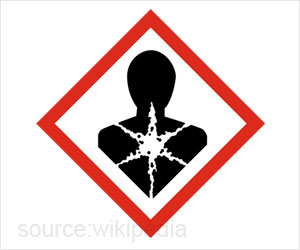- The cabin of a new car may contain potentially cancer-causing volatile organic compounds (VOC s) like acetaldehyde and formaldehyde and others
- Even though exposure to VOCs has many associated health risks, cancer risk is very low
- The manufacturers of the cars were made aware of this risk, and they have taken measures to reduce VOCs in the new car cabins
Volatile organic compounds are compounds that have a high vapor pressure and low water solubility, and they are found in various products such as paints, pharmaceuticals, and petroleum fuels, among others (1✔ ✔Trusted Source
Characterization of VOC Emission from Materials in Vehicular Environment at Varied Temperatures: Correlation Development and Validation
Go to source).
These compounds are also released from new cars, and the levels of VOCs in a new car may be higher due to the materials and adhesives used to make the car, according to Dr. Kelly Johnson-Arbor, a medical toxicologist and co-medical director of the National Capital Poison Center in Washington, D.C.
VOC Level Detection in Cars
Researchers utilized sensors to measure the volatile organic compound (VOC) levels inside a brand-new car that was completely sealed for 12 days while parked outdoors. The tests were conducted at various levels of humidity and temperature.The study discovered that the amount of chemicals emitted within the car was strongly influenced by the temperature of the material surfaces rather than the commonly used air temperature. The researchers observed that higher temperatures were correlated with higher levels of chemicals in the vehicle.
The research also indicated that inhaling, ingesting, or absorbing certain chemicals through the skin could pose a high incremental lifetime risk of cancer for drivers. Dr. Jianyin Xiong, the lead author of the study and director of the Institute of Thermal Engineering at the Beijing Institute of Technology, reported these findings (2✔ ✔Trusted Source
Volatile Organic Compounds' Impact on Indoor Air Quality
Go to source).
After the publication of the study, car manufacturers have taken measures to minimize the release of volatile organic compounds (VOCs) in their new vehicles. For instance, Toyota has produced an eco-friendly polyurethane foam that is used in the seats of select models. Honda has also reduced VOC levels by utilizing water-based adhesives and paints in their cars.
Car Scent: A Potential Risk
In summary, the new car scent may contain VOCs that pose potential health risks. Nonetheless, the probability of developing cancer from exposure to VOCs in a new car is low, and automakers are taking action to diminish VOC emissions in their new vehicles. While it is crucial to acknowledge the possible health hazards, there is no need to become alarmed.- Characterization of VOC Emission from Materials in Vehicular Environment at Varied Temperatures: Correlation Development and Validation - (https://pubmed.ncbi.nlm.nih.gov/26452146/)
- Volatile Organic Compounds' Impact on Indoor Air Quality - (https://www.epa.gov/indoor-air-quality-iaq/volatile-organic-compounds-impact-indoor-air-quality)
Source-Medindia












